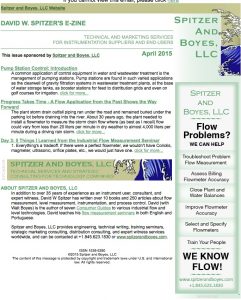
Did you ever wonder what it would be like to be a billionaire? If nothing else, it sounds like an exciting lifestyle. But how would you like to be a billionaire stranded on a desert island? In this situation, all of the money in the world will not help you survive. You may be wondering what this has to do with flow measurement. Simply put, it has a lot to do with turndown.
Turndown is the ratio of the maximum flow rate that a flowmeter can measure within a stated performance to the minimum flow rate that the flowmeter can measure within a stated performance. Without getting into the subtleties of performance statements, this ratio can often be large. How many times have you heard vendor claims of “up to 40:1” or “up to 100:1”? The key operative words here are “up to”. Interpretation of these statements means that you may achieve as high as 40:1 or 100:1, but the flowmeter could provide 4:1 or 10:1 (or less) and still be within the limits of the claim.
For example, magnetic flowmeters can typically measure the flow of a liquid traveling at a velocity of 30 feet per second. In slurry service, velocities above about 15 feet per second are sometimes recommended to prevent solids from accumulating. However, at these velocities, energy costs can increase and the pipes generally wear more rapidly. Therefore, in typical process applications, liquid velocities of 6 to 8 feet per second are more common.
In another example
, it is common for ultrasonic flowmeters to accurately measure velocities from approximately 1 to 40 feet per second. This means that such a flowmeter can have a turndown of “up to 40:1”. This may sound great, but in a typical application, only about 6:1 or 8:1 turndown would be achieved because the full scale flow is typically 6 to 8 feet per second. In short, the stated maximum turndown is based upon a range of flow rates (8 to 40 feet per second) that will not be encountered.
Conversely, piping systems for abrasive liquids are often designed to operate at much lower velocities to reduce abrasion. Maximum flow rates in these applications can be as low as 2 feet per second (or lower). It the above ultrasonic flowmeter applied to this application
, the flowmeter would operate accurately over a turndown of only 2:1. This turndown is far from the 40:1 turndown implied by its “up to 40:1” specification.
When selecting a flowmeter, be sure that you define the turndown that you need, determine the turndown that the flowmeter will provide based upon the actual flow rates or velocities encountered, and then make your decision. One more thing — be sure to stay away from desert islands where you might get stranded.
Originally published in Flow Control magazine.
